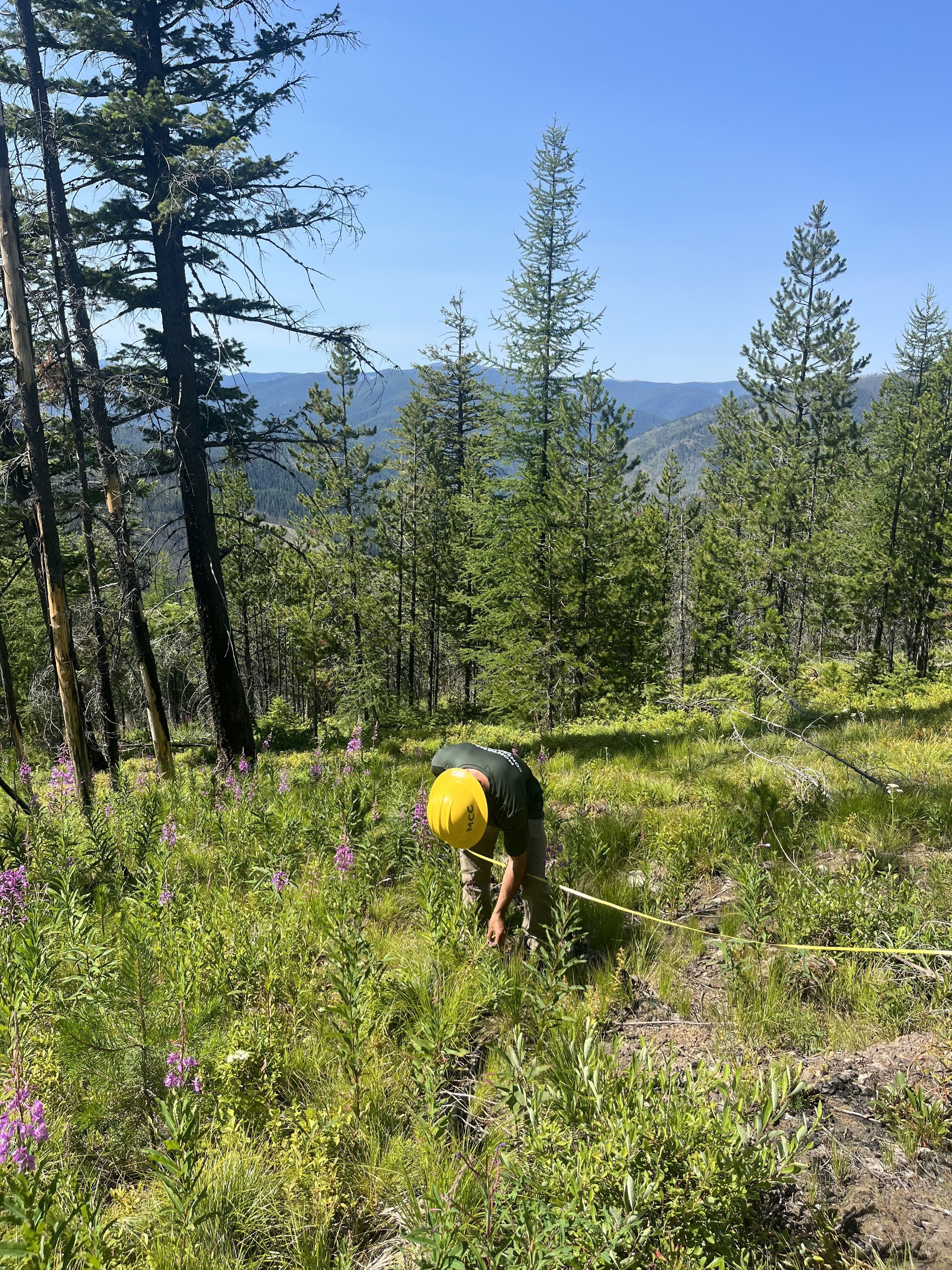
It’s roughly the midway point of the season and our crew has been working 4 ten-hour days for the entire season till this past week. On Monday (07/17) we arrived in Trout Creek, where we would be working for the next month. Our project partner, Brian, proposed the idea of working an 8-day hitch and we graciously accepted his offer, marking it our first of the season. Brian gave us an introduction to reforestation surveys he needed to be completed in a burn scar from the Moose Peak fire in 2017. Reforestation surveys entail a variety of different aspects: navigating to a randomized plot point, determining the slope using a clinometer, using the slope to dictate how far one walks out from the plot center, and spinning a circumference of the determined distance away. Every tree within this circumference is counted, analyzed, and recorded for the survey.
Working in burn scars can be particularly unnerving depending on the weather. We learned this first-hand on that same Monday. Because many of these trees are dead, they lack the stability and integrity that they once had - a strong gust of wind can blow them over. We watched this happen several times further up the hill from us before Brian decided it was unsafe to continue working and had us return to camp for the day. Having felt comfortable with what he had been able to show us, Brian cut us loose for the rest of the week.
This week would prove to be physically exhausting as there was no easy path to the burn scar located on top of the mountain. Our only options were hiking through 2.87 miles of VERY dense brush (on flat ground) or hiking off-trail up to the peak. After taking a beating from alder branches and spruce needles, and sneezing a lot of pollen out, we opted for hiking off-trail. Occasionally, we would hike through the brush again to diversify our day-to-day. Hiking up the side of the mountain can prove to be a daunting task but rewarding when you reach the top. After one day last week, my phone had recorded the equivalent of 138 flights of stairs climbed! Our crew proved to themselves that they could accomplish this task and pushed through fatigue (maybe some mental frustration too) and we came together stronger for it.
Throughout the week, we got over 100 plots surveyed and look forward to conducting more over the next hitch. Most importantly, we learned a lesson on fortitude and togetherness – like trout swimming up creek.

![[Image Description: Two MCC members taking a brief break; one is sitting on a rock, the other is standing nearby. They are both in their uniforms, looking out at the expansive, mountain view surrounding them.]](https://cdn.firespring.com/images/c3f85e97-43a9-4810-8081-e8e6338173d0.jpeg)




